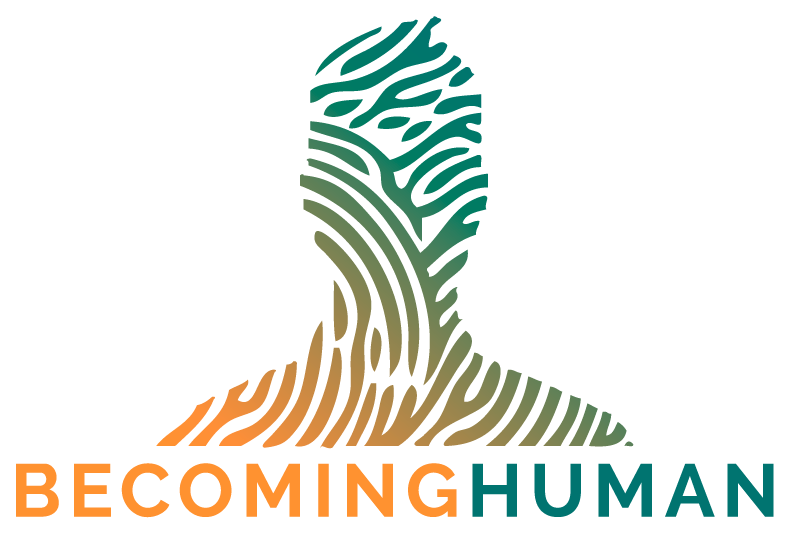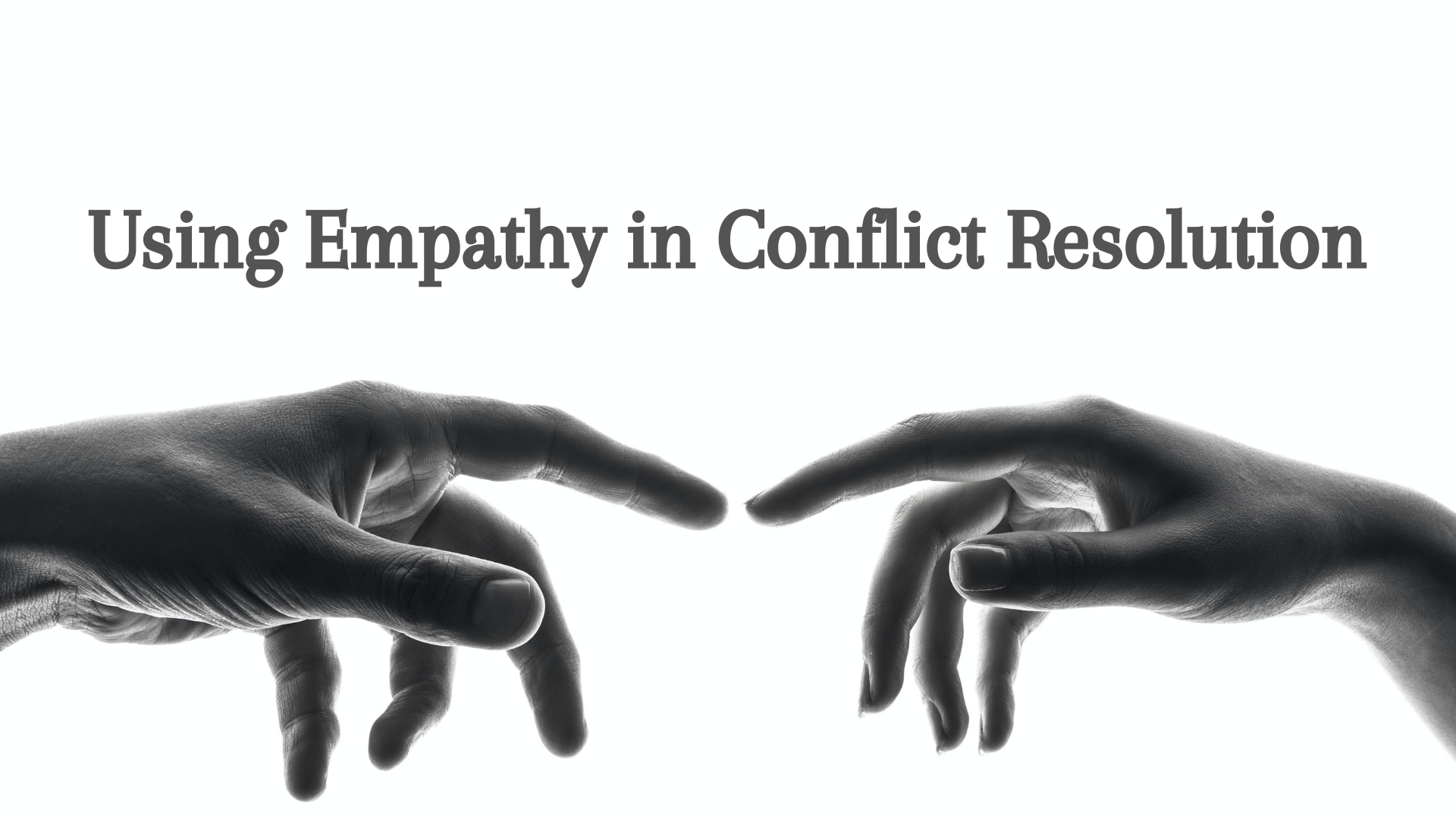How You Remember (Some) Stuff - [The Art of Memory]
/Part One — Not a Technique, Just a Fleeting Exploration of How Memory Works
What was the name of the person I met at that event last night?
What was that address again (even though those of you with smartphones don’t really need to know addresses anymore)?
What day is their birthday?
What is the name of the blender I bought that I was going to tell my friend about?
What was that data that I read, but am struggling to currently recall right now?
Or that historical fact that just won’t quite surface in my brain?
Now, there are a lot of techniques out there to help you remember this type of information. From Kwik Recall (which certainly has some good content) to experiential methods (usually in blog posts); from books by very smart people to new studies based on Alzheimers research of undisturbed rest following an act of learning — lots of folks offer strategies to boost memory, concentration, and recall. Some are well rooted, peer reviewed techniques yet others are hacks based on individual experience. Both types can be helpful, and by all means, use them to your advantage.
However, for me, it has been understanding what is behind the techniques — the foundation of memory — that has proven to be the most beneficial content for improving my ability to remember stuff.
Getting to the psychological roots of memory has allowed me to adapt memory, concentration, and recall to my specific context.
So I’m not going to give a unique technique for improving memory — I just want to cover the basics, exploring the science of how memory exists in the brain.
My aim is to answer the fundamental questions:
Why do we remember some things and forget others?
Why do we remember some things briefly, but then lose them over time?
And what do we know about how memory and the brain works that might help you be more intentional about how you learn & intake information?
Part Two — Sensory vs. Short Term vs. Long Term
The brain’s process of memory is quite complex and involves several forms of memory. Understanding these forms is key to unlocking how information stays in the brain long term.
Sensory Memory
Let’s start with the fact that you are, technically, learning things constantly. Every moment you are alive you are taking in information. You remember very little of this information long term, but we must acknowledge that memory and learning doesn’t just happen when you sit down to read or watch something.
This is called Sensory Memory.
Sensory memory is, quite literally, anything that your senses take in during a given moment. When you feel the touch of your keyboard or phone, the olfactory information you bring in with each breath, the colors and objects you see, the sounds of music or conversation or traffic that your ears pick up, or the taste in your mouth that is constantly present — each and every single sensory experience is something you take in and is technically a part of your memory.
However, most of these pieces of information don’t last very long — their lifespan is usually about one second.
Now, this doesn’t mean that sensory memory is relegated only to the instant, indeterminate information that you happen to taste, touch, feel, smell, or hear. Learning someone’s name, trying to memorize content, or reading a book — all of the information that you eventually want to keep in your memory — all start as sensory memory, too.
Your senses are taking in even the most important information and all of it is stored in your sensory memory for that blip of a second.
This means that your sensory memory is huge — you have an almost infinite capacity to sensory information even though it is only guaranteed for a brief second.
You are constantly putting infinitely large pieces of content into your memory, but most of them are gone immediately.
So how do we keep this sensory information going?
Short Term Memory
Memory is often compared to the craft of construction. Processing sensory information is like grabbing a tool; moving the information into short-term memory is like placing that tool on your workbench.
You decide, in every moment, which information you want to consciously focus on. While you are reading a book (or this article), you are taking in all sorts of information from the sounds you are hearing to that dry taste in your mouth to how your body feels or what the pages (or electronic device) feels like on your fingers to what the page looks like or the colors surrounding you to the smells permeating your space. But most of these senses are happening subconsciously and we don’t pay much attention to them. Those tools / pieces of information come into your sensory memory and then vanish.
The words you are reading, however, have captivated your conscious thoughts and simply by that intentional focus, they move from sensory experiences to short term memory.
This is called “Encoding.”
Encoding is the intentional, conscious recognition of a sensory experience that brings the information into your short-term memory because of the focused attention you give it.
Slight problem for this level of encoding — it is still called short term memory.
Conscious processing elevates information from the quickly evaporating sensory memory, but it still is quite short — about 30 seconds.
Also a problem for something being in your conscious thoughts is that it is much more limited than sensory memory. By giving explicit attention to the sensory information you ensure that the information is not going to disappear instantly, but you also lose the infinite capacity for a much more limited storage bank — about 7 chunks of information, give or take 2 (I’ll do the math for you — about 5–9 chunks of information).
That is the limit of your current conscious workbench.
And you only have about 30 seconds before that information, just like your sensory memory, dissolves.
But here’s the thing — you remember more than 5–9 chunks of information, right? There must be a more permanent level of memory, then.
There is.
Long Term Memory
First, the good news — long term memory has an infinite capacity.
More good news — long term memory is capable of an infinite duration.
So you have taken the information from your sensory memory and placed it in short-term storage through a conscious encoding process. But how do you do you transfer that information into permanent storage, or long-term memory?
Now for the bad news.
This, too, requires encoding, but on a deeper level (that’s coming below).
Somehow, you have to create an association or attach significant meaning to the content in order to store it permanently.
In the field of memory and recall techniques, this is the area on which most people focus — finding ways to create associations or attach meaning to help you remember content.
Before we discuss those components of long-term encoding, however, we must cover the There are also various types of long-term memory.
Explicit Long Term Memory.
Any piece of information that requires recall fits in this category. Psychology breaks explicit long term memory into two forms:
Semantic — facts, words, or pieces of information that are more cognitive in nature. If you have a quote memorized or statistics or details from a book or story — it is in your semantic long term memory.
Episodic — pictures or images that you have engrained in your brain.
Implicit Long Term Memory.
Any piece of information that is engrained into your life, but doesn’t require intentional recall fits in this category. Again, there are two forms:
Automatic — Procedures or functions that you learned but no longer have to think about, like walking or breathing. Fortunately, our bodies are pretty good at accomplishing this fairly early in life.
Conditioned — these are procedures or functions that you have made into muscle memory. You take the information and do it frequently enough to become natural. Neurologically, your myelin sheath is predisposed to make this happen — you have a coating around every neuron that grows stronger every time you engage that function. You literally condition these things into your memory. It is possible to condition yourself to make otherwise unnatural learned behaviors innate to your life. This isn’t always positive, either. You can make bad habits innate — which is what happens with most addictions or compulsions. Changing behavior is also dependent on conditioning your external environment to become muscle memory.
If you are still reading this, I assume you are a curious mind who desires to encode information into your long term memory.
Here’s how we do that:
Part Three — Tips For Encoding Long Term Memory
The goal, then, for learning, memorizing, or internalizing any style of information is to encode those pieces of information into this long-term storage bin in your brain.
Going from sensory memory to short term is pretty simple — just give the sensed information your attention. Encoding long term is a bit more difficult.
This is why a lot of information stays short term and why even more information begins the process of becoming long term, but isn’t solidified and decays. You remember a name or fact or habit and it stays with you for a day or a week, but then fades away.
This is called Encoding Failure.
Remember how you placed a tool on your workbench to move it into short-term storage? Moving something into long-term memory is like taking the tool from that workbench and putting it in a toolbox. However, if you don’t intentionally keep that toolbox within reach, it becomes difficult to access. There are two main types of encoding failure:
Storage Decay —This is when you begin encoding to long-term memory, but never complete the process. Either you either fail to continue to access the information or never fully solidify it. Psychologists call this “extinction.” You place the information in the new environment, but don’t nurture or adapt it to its new location, and it atrophies.
Interference — This is when other information gets in the way. Being distracted, not learning the information correctly, or learning conflicting information can cause interference. Essentially, a lack of intentionality causes the information to stay short term.
Now, let’s address how we avoid Encoding Failure.
While there are a vast amount of resources available to teach you specific techniques that correspond to these principles, I want to offer the root behaviors that you can adapt to your specific context. To steal from music theory, specific techniques are like learning a song in a particular key. It might translate into your song positively, but there is a chance that you aren’t able to play in that key. My goal isn’t to teach you specific notes, but to give you the standard scales or notation that you can transpose to a key that works for you.
To use another analogy, instead of giving you the recipe, I want to give you the culinary basics that will set you up to cook (encode) whatever you want.
So here are the basic requirements, or principles, for encoding to long term memory that you can adapt to your context.
1 — Motivation
You’re at a party and someone comes up to you and introduces themselves. They say their name and then they begin telling a story or talking about their day.
If you want to remember their name, there is one step that, in doing this, will either solidify the information or make it obsolete.
You have to intentionally process their name.
Otherwise, you will lose the information since the short-term time frame is expiring as you’re processing the next piece of content from the conversation.
Whatever you are trying to remember, it begins with the intentional motivation of wanting to remember it.
If it is a name, what I will often do is repeat their name out loud in some civilly recognized way — “Nice to meet you, Siam.” If it is a fact or image, I will tell myself the piece of information again as a way of reminding myself that this is important and I don’t want to lose this in the next 30 seconds. Taking the information and visualizing it in your mind or in the physical space solidifies the memory because of your motivation.
This is the same reason why writing out notes while intaking information (i.e., reading a book or during a meeting) helps you remember. It isn’t that the notes are now engrained in your brain, but the intentional act gives your brain permission to view this information as a priority.
Memory all starts with motivation.
But there are other important principles for encoding the information, as well.
2 — Emotion
The more vivid you can make the information, the more engrained it will become in your memory. While long term memory involves various parts of the brain working to reconstruct information and activate piles of neurons collaboratively (this is what keeps the information consistently active in your brain and allows it to continue to be encoded), there is a unique process with emotions that makes encoding to long term memory more effective.
Not to get all brainy, but the simple version of the process works like this:
Encoding involves the prefrontal cortex (your mind’s CEO) and the cerebellum (where motor skills are primarily found), but emotion brings in the amygdala. When this happens, a certain amount of arousal gets paired with the information, making it more solidified in your memory.
Pairing emotion with the information vastly improves the likelihood of the information getting encoded into your long term memory.
This is why art creates more vivid recall — the art and its ensuing emotions are like a Trojan horse carrying the information to your long term memory. The communication concept that “rhetoric doesn’t change people, experience does” has some truth to it…because the ‘experience’ is what brings the amygdala into the memory game. This is also why traumatic events are so engrained in our lives.
The mood that triggered your aroused encoding when you were first learning the information is also important because being in a similar mood later can trigger that memory.
Which brings us to the next principle.
3 — Location & Associations — (The Encoding Specificity Principle)
Have you ever noticed that you remember events with more clarity when you are in a similar space or atmosphere to when you first experienced the memory? Being in a similar space or atmosphere triggers the encoded information (similar to how emotions function in the 2nd principle).
This principle deals more with recall than encoding. The information is encoded in a particular context and, therefore, re-entering that context further solidifies the memory and makes recalling that memory more likely.
Essentially, nostalgia is a powerful memory device.
The more technical name for this phenomena is the “Encoding Specificity Principle.”
I remember a professor in college giving me the tip that studying in the same space where I was going to take a test would make my recall more effective. The location acts as an association that is congruent with whatever you are trying to learn. Part of this deal with the myelin sheath mentioned above — the neuron coating carries the minute details of associations that trigger the memory more vividly. Similarly, this is why you might crave certain foods during certain seasons or moments.
Intentionally learning in an associated environment that practically connects to where and when you will need that information later is a practical way to embed said information in your long term memory.
Study where you are going to take the test.
Practice your speech in the location or environment you will be making it public.
The more vivid the environment where the memory is created then the more associations you pair with the memory. The more associations you pair & links you connect to the memory, the more encoded the information is.
4 — Undisturbed Processing
There is a common reference that the most effective way to encode information is in chunks of about 15–30 minutes. There is even a technique called “Pomodoro” that acts as a management tool based on setting a timer for working or learning. You do 25 minutes and then rest for 5 minutes with a longer rest of 15 minutes after a certain amount of segments.
Why?
Because your capacity as a human being is limited and you have to force yourself into constraints to avoid overloading yourself with information (which would be a form of interference that leads to encoding failure).
However, the second part is equally important — that you intentionally take time to process the information to ease it into your long term memory. Various studies have been done on this and having the undisturbed intake followed by undisturbed processing gives you time to set your attention to the information and put it on the shelf.
After the event (reading the book, leaving the meeting, being done with class, meeting the individual, etc), you review the information to process it.
The period of rest forces you to focus on and observe the information which transitions the memory to your hippocampus for storage.
5 — Using Patterns & Attributing Meaning
Now we are getting into trendy techniques.
You may have seen people memorize the order of a deck of cards or a list of random words. What these are usually doing is pairing the specific piece of information with a currently known association to give it meaning that you understand.
Patterns are a method to create links for triggering the information more easily by making it accessible via the information you already have. You use something already familiar (whether images or congruent associations or patterns that you’ve already built in — like your work commute directions or your morning routine), create the link with the new information, and then recall that information based on the previous content.
It would be like memorizing these principles by giving each one a connection to your process of walking up to your house. Getting out of the car is emotion. Walking past the trash can is location & association.
Or, to reference the Motivation principle when the person introduces themselves by telling you their name — I might repeat the name, but then I will attach their name to other people who have that name or information that resembles their name — “Siam, like the nation state that became Thailand.” Now, I have a link to help me recall that name later.
Remember, you can only take in so many “chunks” of information at a time. What patterns do is condense pieces of information into larger chunks. Patterns help create a map to condense the unfamiliar information into previously known information and make it easier to navigate and make it more accessible. By attributing some sort of meaning to the information, it is encoded with what you already value and know. If you can create a link of uniqueness to the piece of information, it makes it more meaningful.
Using patterns to create meaning is a great way to remember information.
Let it also be said that this can be the most unreliable — unless the information truly has meaning and is embedded properly, it will stay in the short term. A person who memorizes a deck of cards or a list of words in one moment probably doesn’t remember that same information a week later. The more meaningless the pattern, the less likely you are to fully encode the information long term. Patterns and meaning are best used in conjunction with each other.
It is also important to pair this principle with the others.
The next one is a good example.
6 — Conditioning to Familiarity
Continuous repetition over time, while the most difficult, time consuming, and least meaningful option, will encode the information.
Instead of repeating the name or using a pattern (or in conjunction with those things), you see the person continually over time and hear their name in association with their presence and the information gets stored more permanently.
Essentially, your external environment will play a role, over time, in what you encode and what you don’t. You can have the desire and motivation to memorize something, but the infrastructure surrounding your life is a more powerful dictator of what will be taken into your memory.
First, remember extinction — if you don’t keep reintroducing the behavior or information, it will go away.
Second, the Behavior Modification and Law of Effect — which is based off of classical conditioning. You are likely to repeat a behavior or internalize information that has positive effects and you are likely to avoid that which has negative effects.
The more positive effects associated with the memory or the information, the more you are likely to keep it around. The more you keep it around, the more conditioned it will become internally — or what Psychologist call “acquisition.”
External environment will lead to internal development. This is true about behavior and it is also true about memory.
7 — Incarnational Learning
The most practical way to remember something is to do something with the information.
Somehow, you have to move the information from you head to your hands. This creates meaning, emotional connections, and tangible associations. It can also lead to conditioning and the undisturbed, intentional processing that is so important.
More on this here: Information Intake Vs. Information Embodiment
Actually doing something with what you learn will make it a more permanent part of your toolbox or shelf.
Part Four — The Bad News
Everything above is how you remember stuff.
But I haven’t given you the actual bad news yet:
1 — Memory is Malleable
Notice that I haven’t said memory is permanent?
Yes, your long term memory is infinite both in capacity and time, but that is the ideal.
In addition to limits on how much information you can process at once (see principle No. 4) and the risks of losing long-term memory (see encoding failure, specifically storage decay), your memory is malleable and can change over time.
This is why eye-witnesses are steadily losing value in the court room — because not only do eye-witnesses usually fail to encode all of the information necessary in that moment, but how we remember what happened is continually affected by new pieces of information that are gained over time. This is also why we tend to romanticize the past — because our malleable memory has evolved how we remember the past into something that isn’t quite as historically accurate as we might claim.
The same is true for what you learn — as you encode more things to long term memory, the new and old memories adjust to one another and, therefore, effect one another. This can make the information we have more powerful, but it can also make us a bit more unreliable than we would prefer.
2 — Technology Corrodes Memory
You’ve probably heard that oral cultures didn’t have to write down their information because their brains were wired in a way that they were able to remember and retell their stories by word of mouth. In fact, it was part of the ancient Jewish tradition to have the entire Hebrew Scriptures memorized during their lifetime.
Why don’t we still function like this?
Because we don’t have to.
As literacy and writing technology advanced, we were able to place information that in previous living conditions was only accessible orally and put them down on paper. This is a great feat of progress and I imagine we are able to be in contact with an exponentially larger amount of information because of this, but I also imagine that our memory muscle is a bit weaker in the process.
Technology corrodes memory — because it eliminates the need for encoding.
This doesn’t mean our memory muscle is expelled completely as you still have information in your long term memory and we still are able to spout off speeches, songs, and movie quotes from memory, but it does make encoding a bit more difficult than it might have been in a culture where encoding was a natural necessity for remembering absolutely anything.
We have notes so we don’t have to memorize books or facts.
We have GPS and contact lists so we don’t have to memorize a phone number or how to get to an address.
I’m not ready to pronounce a moral judgment on this change, but we can name that this has caused a bit more difficulty to encode information into our long term memories.
As you go through the journey of learning, remembering, and recalling information — just keep in mind that you are up against a cultural shift that has made this more difficult.














![Three Reasons We're Lonely - [And Three Responses For Being Less So]](https://images.squarespace-cdn.com/content/v1/5963d280893fc02db1b9a659/1651234022075-7WEKZ2LGDVCR7IM74KE2/Loneliness+3+update+%283%29.png)





























